date of issue:2021-02-26
| 1 | Peel | kmkgi |
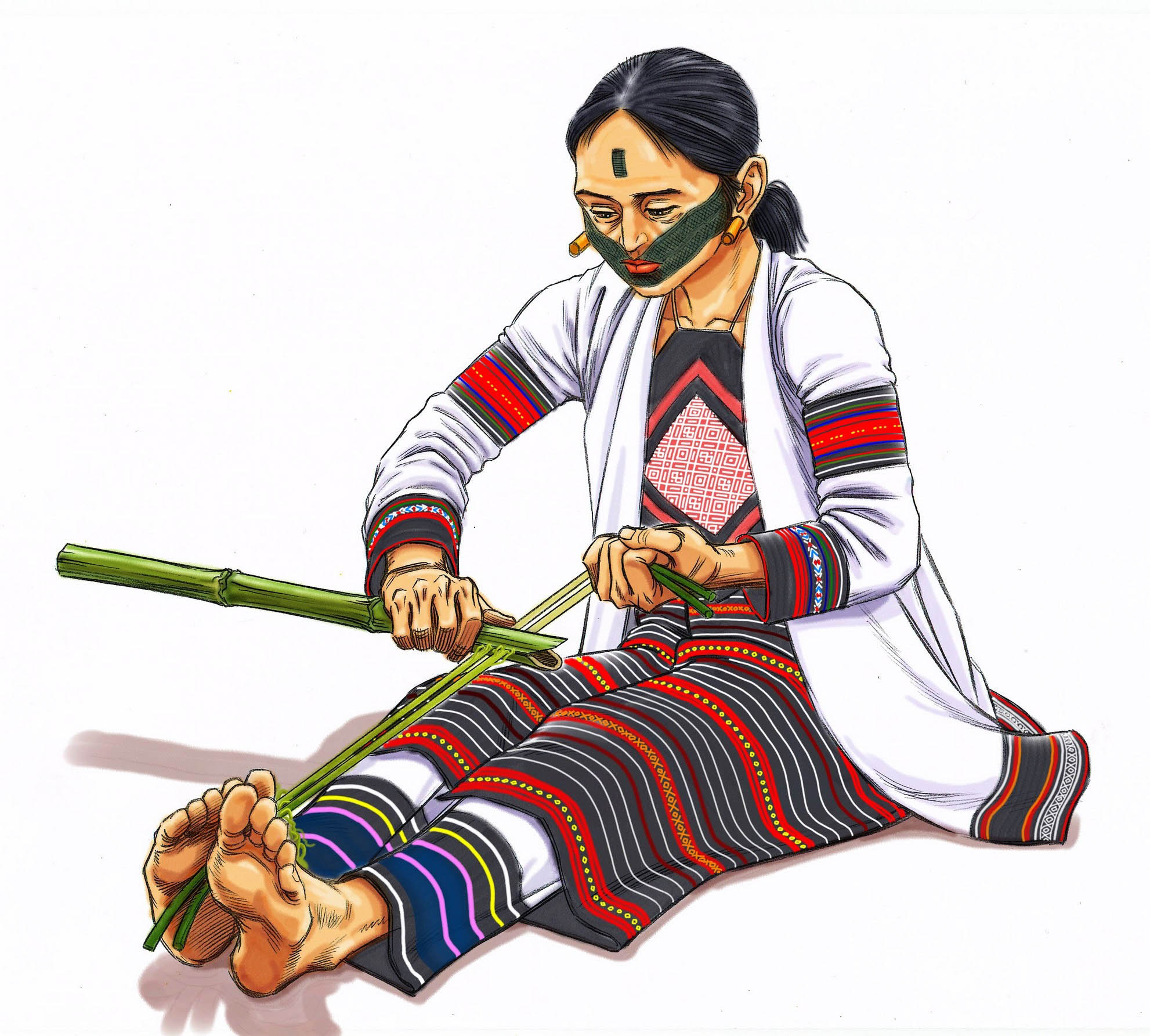 |
First cut down the stalk and break off the leaves. Then, from the bottom end to the top, bend without allowing the stalk to snap. Use the sharp edge of a bamboo hemp cutter to scrape off the skin and inner material surrounding the fibers. Then extract the fibers, and tie them in a bundle. |
| 2 | Separate | m’nuka |
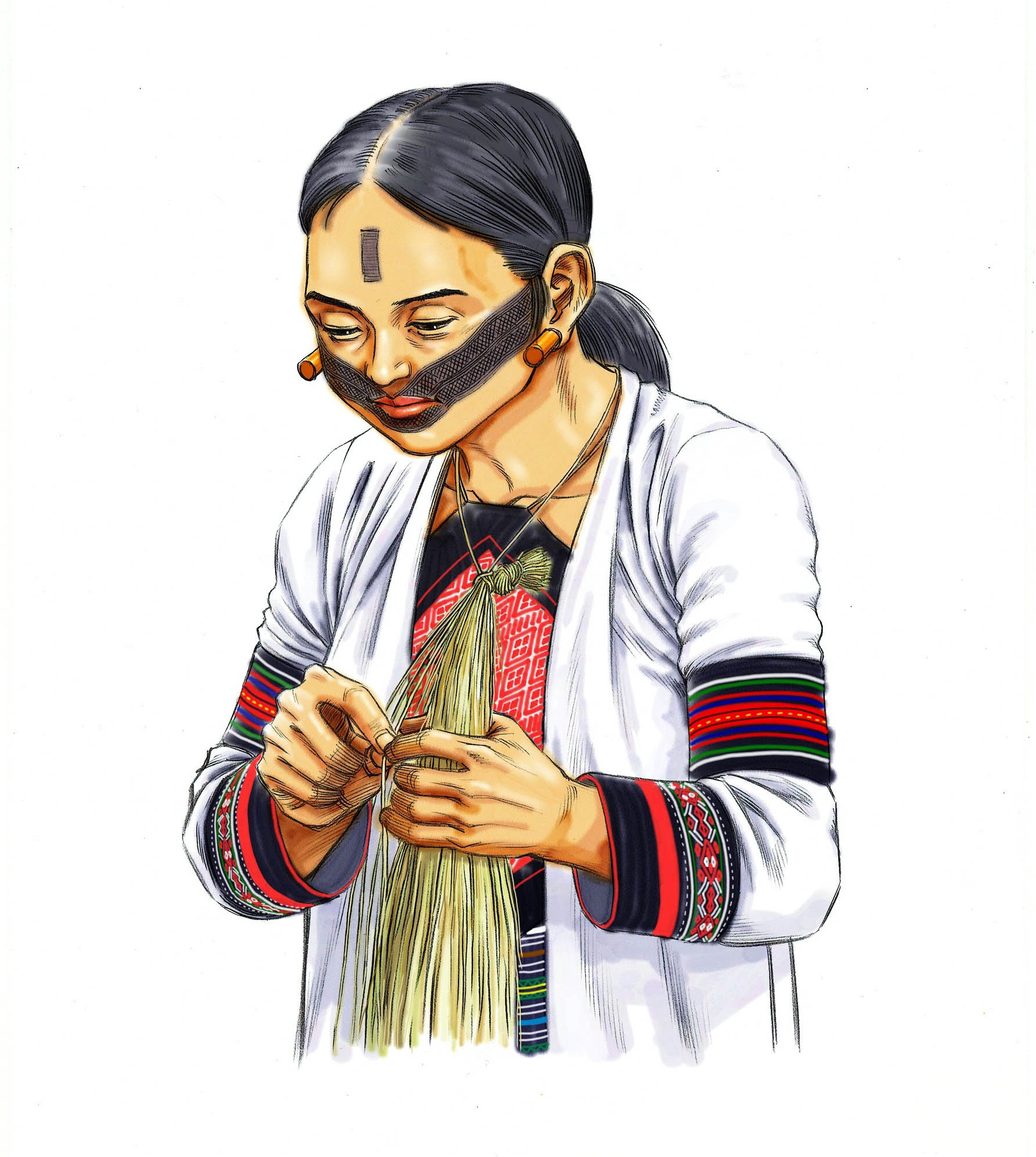 |
Dry the ramie fibers in the sun. Then take the two ends of each strand and twist them together. |
| 3 | Reinforce | m’nuka |
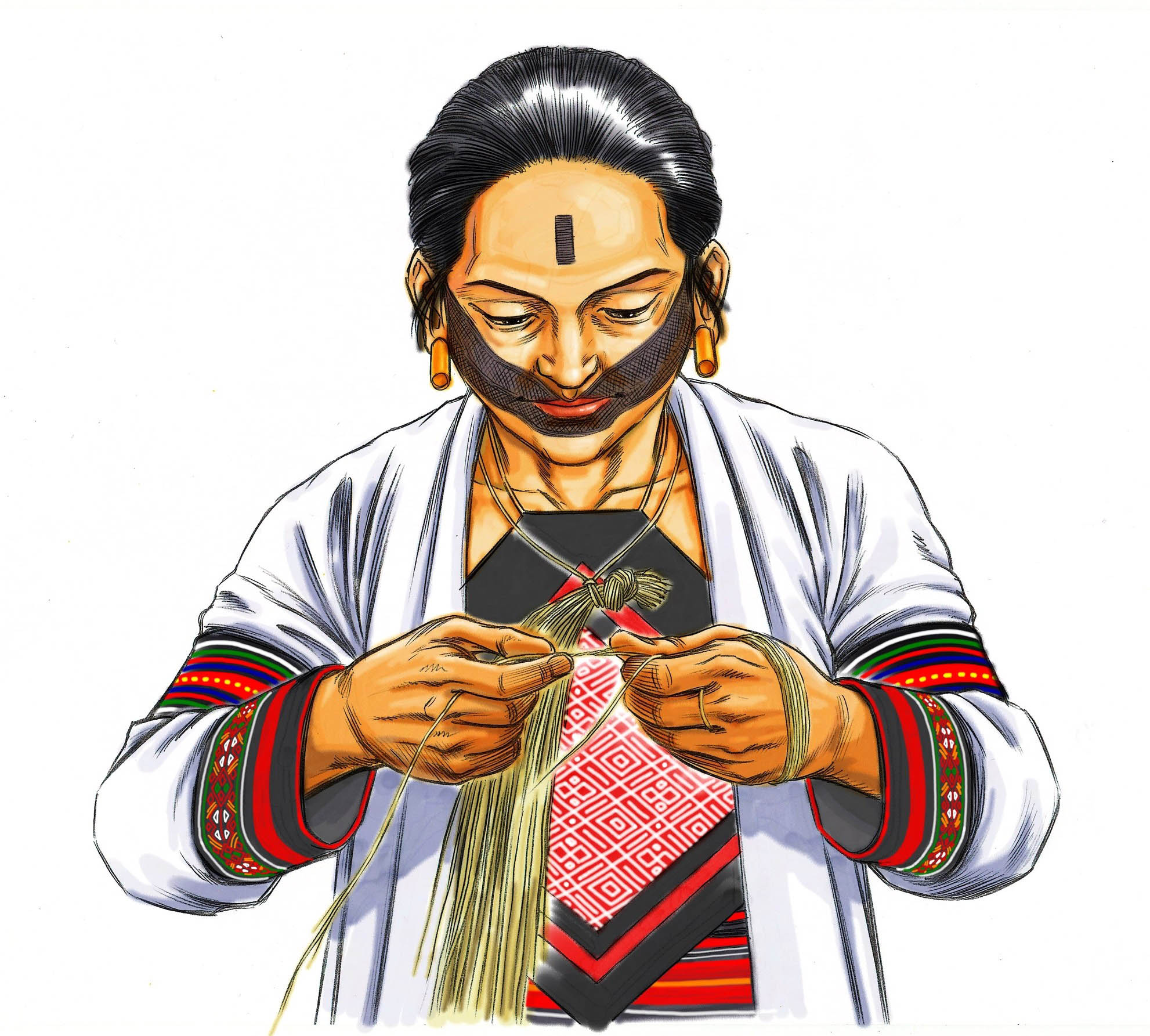 |
To make the strands stronger, twist and knead them together horizontally in pairs. |
| 4 | Spin | mcisa |
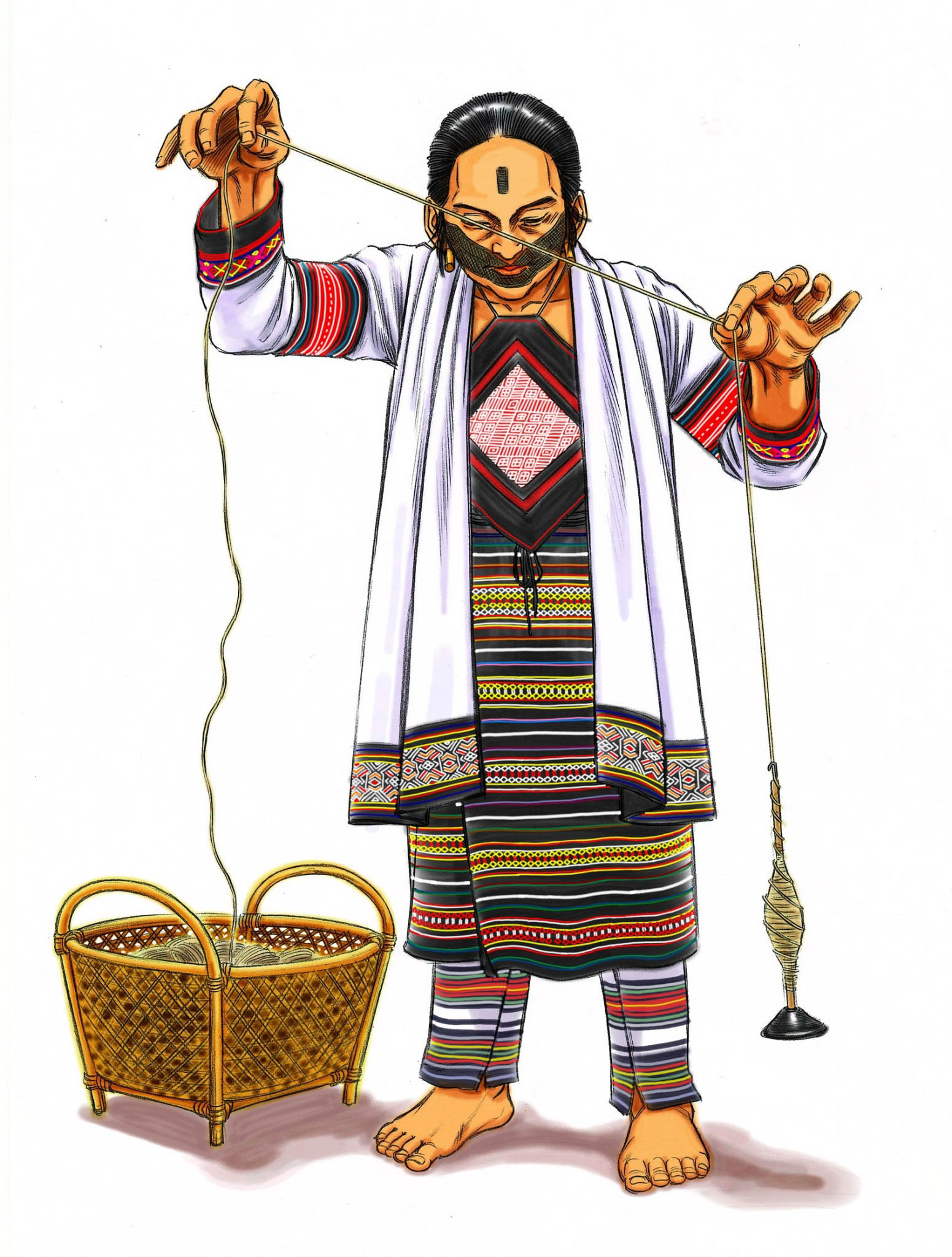 |
Use a spindle to tightly twist the reinforced strands together into one long and continuous yarn. |
| 5 | Frame | ma’losan |
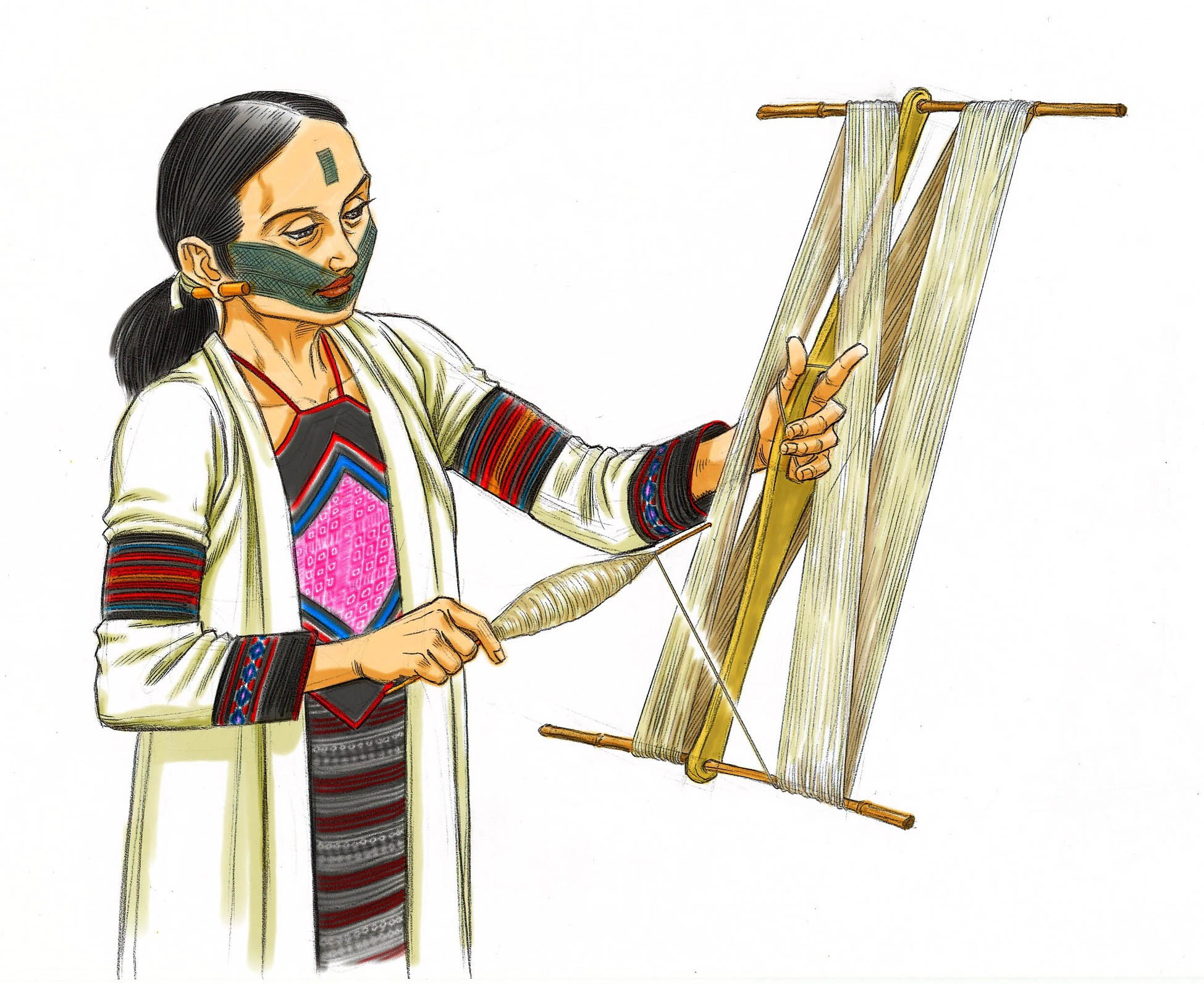 |
Take the tightly twisted yarn and wrap it around a knitting frame. Take care to keep each loop separate, so the resulting reel of yarn will not become tangled. |
| 6 | Refine | tmahokwayay |
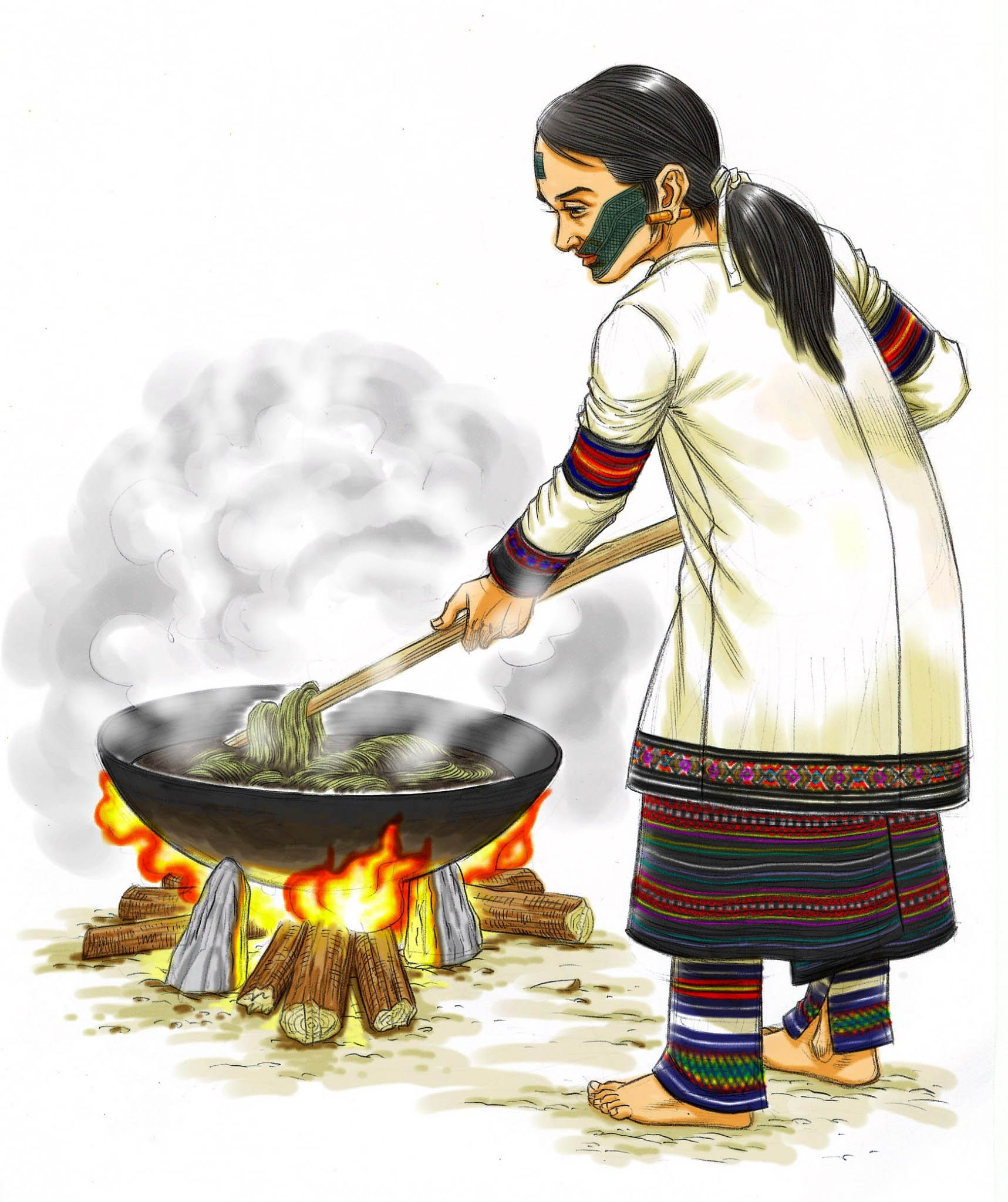 |
Boil the reel of yarn in water together with charcoal from Trema tomentosa bark, until all sticky impurities have leached out. During the process, stir the yarn so that the bottom is not scorched. |
| 7 | Hang | mugiwayay |
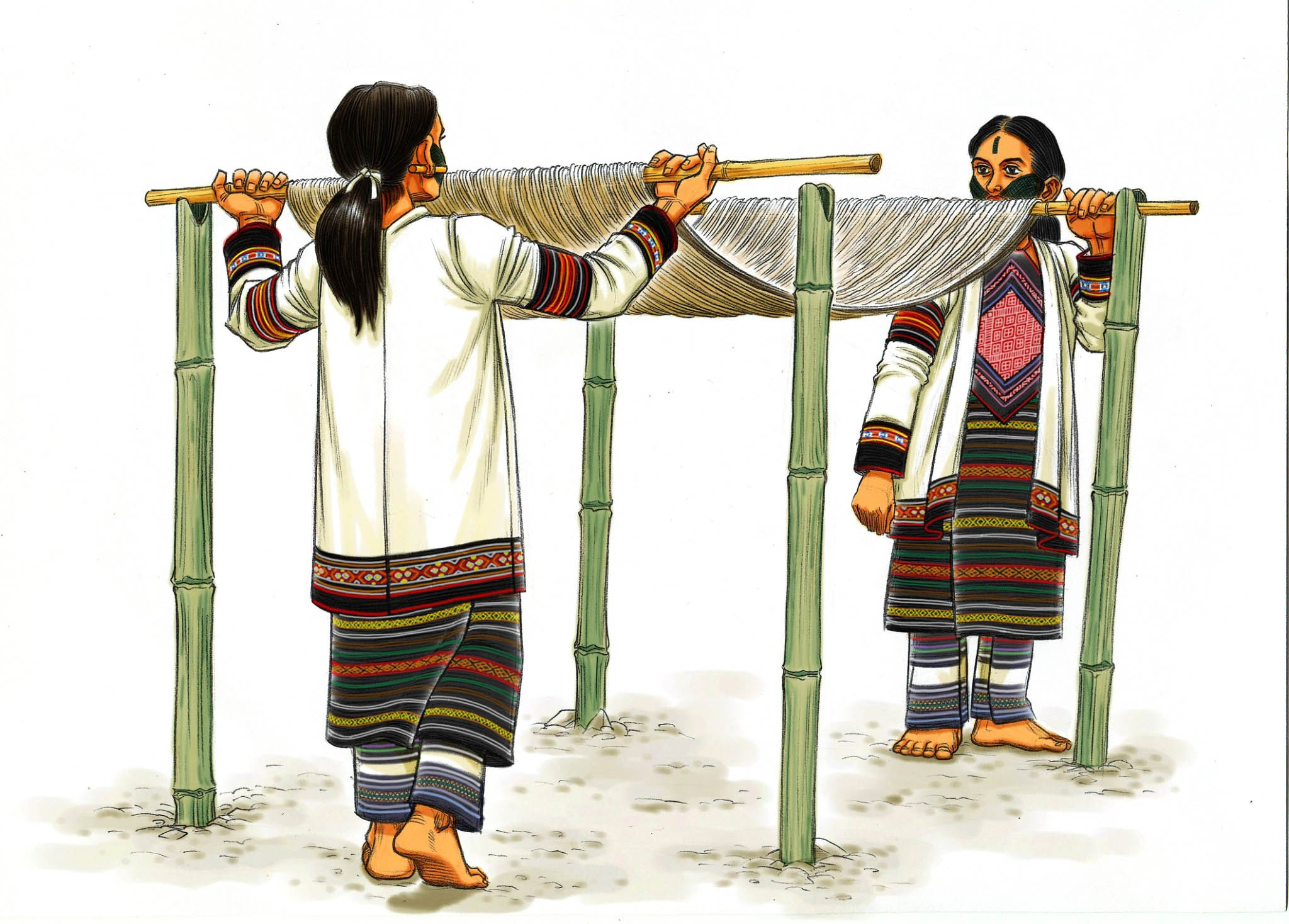 |
Hang the yarn across bamboo poles outdoors, maximizing sun exposure. Leave it to cycle through sun and rain for several weeks, to bleach/whiten the yarn and prepare it for the dyeing/coloring process. |
| 8 | Color | mamas wayay |
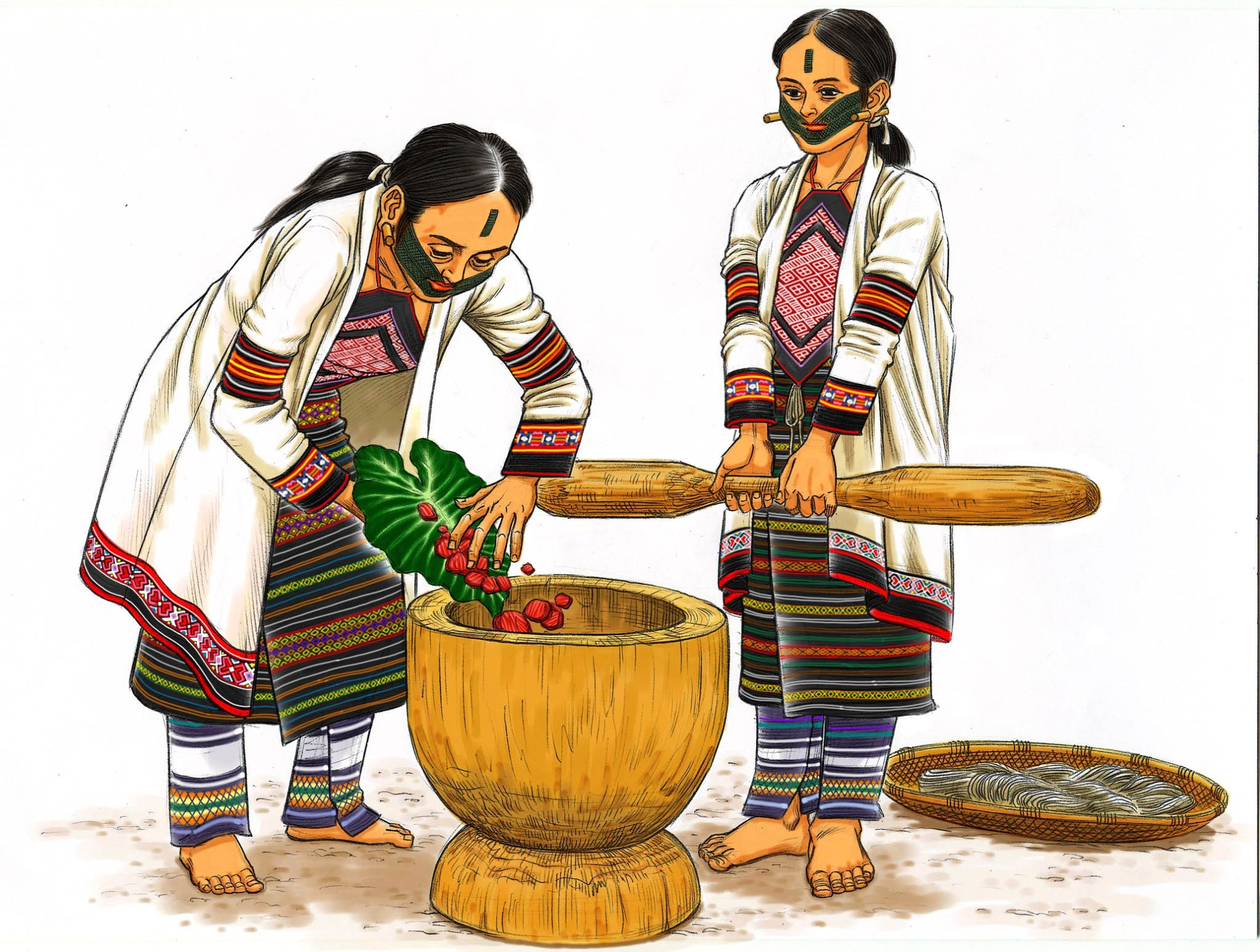 |
Traditional fiber, thread, and yarn coloring uses natural coloring agents. These “plant dyes” include extracted pigments from plant stems, roots, and leaves. |
| 9 | Warp | mlsay |
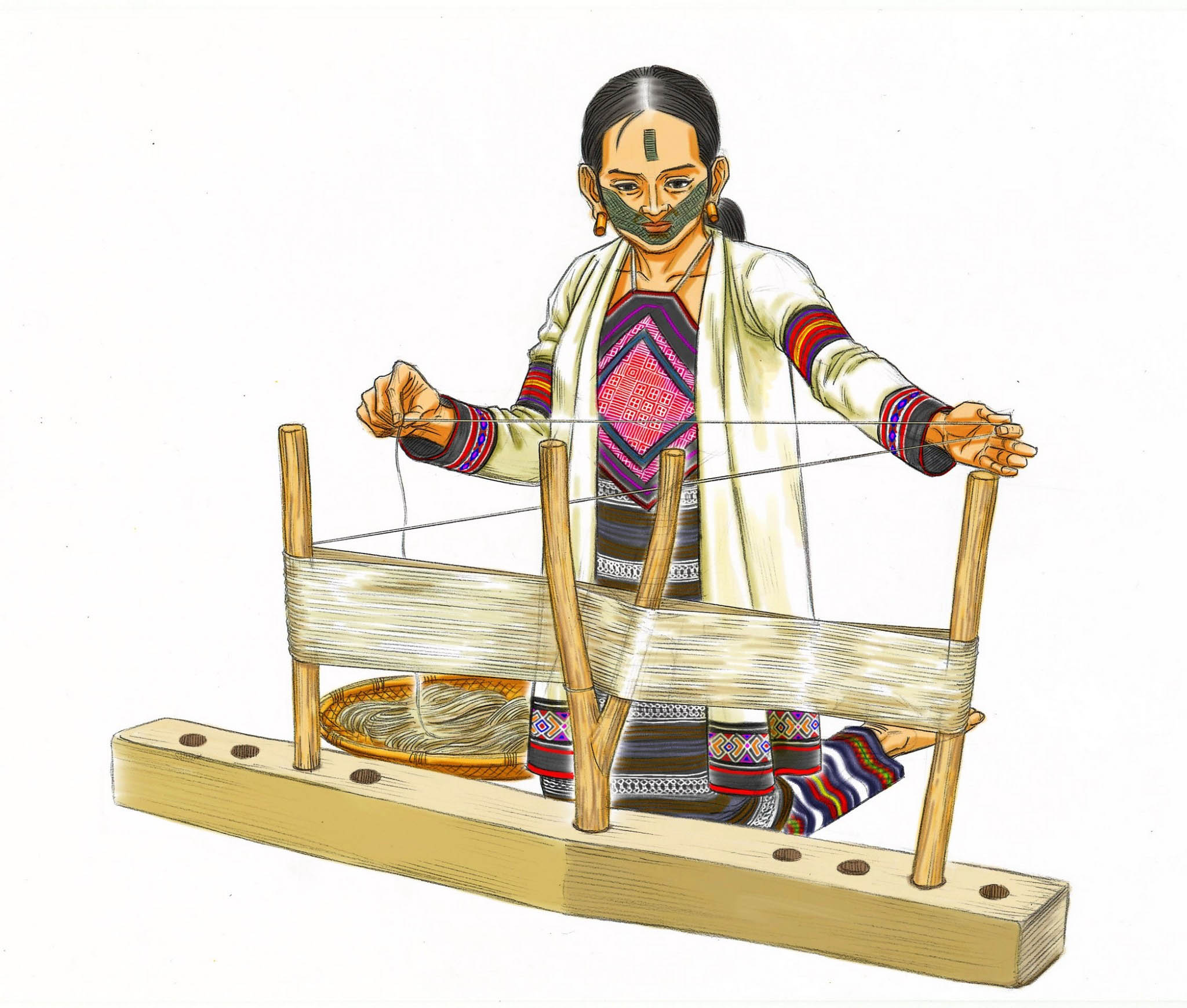 |
The weaver must adjust the warping pole or frame, and process, according to the desired length and type of fabric. |
| 10 | Weave | tminun |
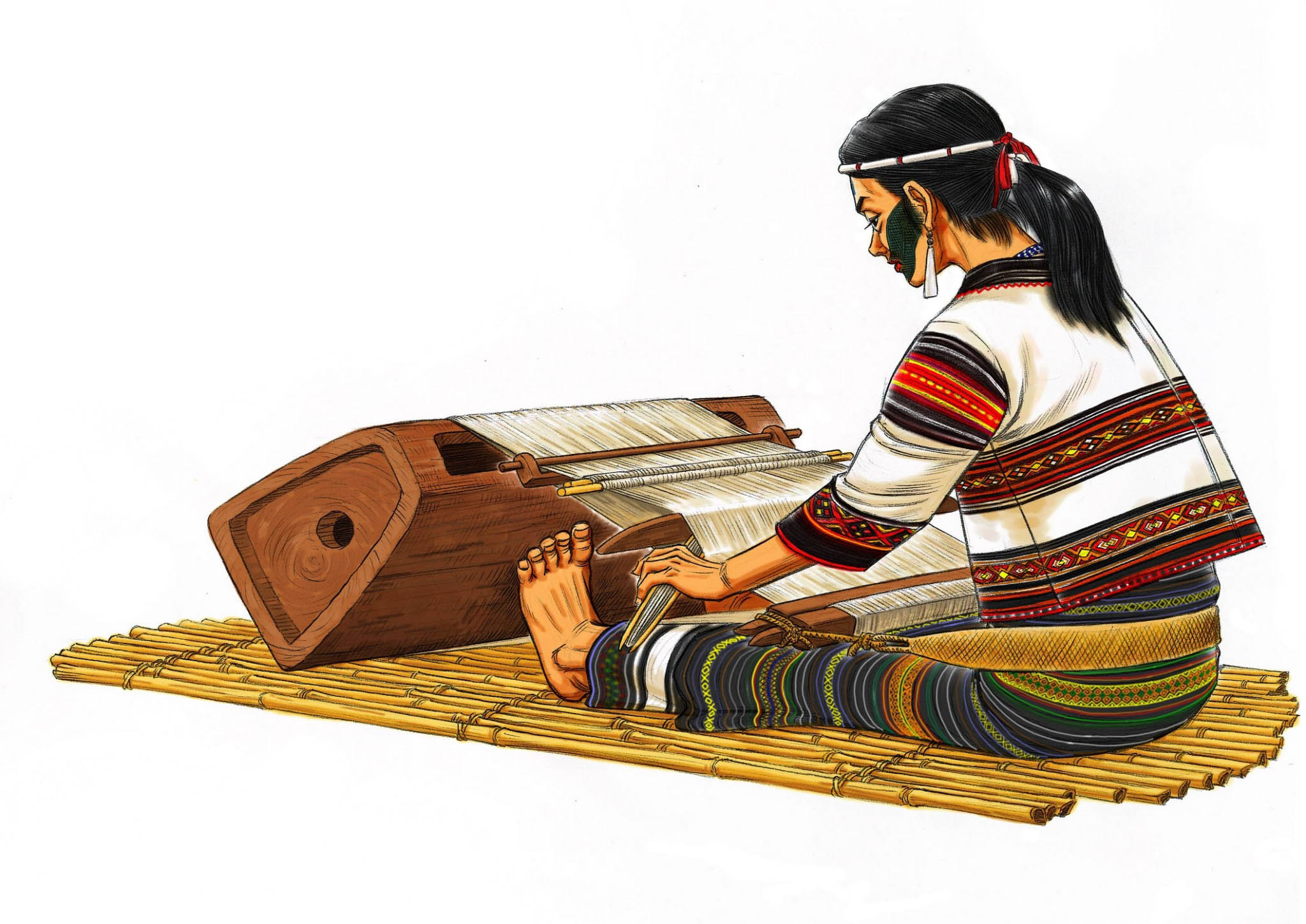 |
The type of loom traditionally used by the Atayal people is a horizontal strap-waist loom box. During weaving, the front and bottom remain horizontal, and the pulling force depends on the strap being secured tightly around the waist of the weaver. The feet prop up the bottom of the box. The weaver must sit with legs stretched out straight on the floor, and the waist strap secures the roll of fabric across her waist. |
